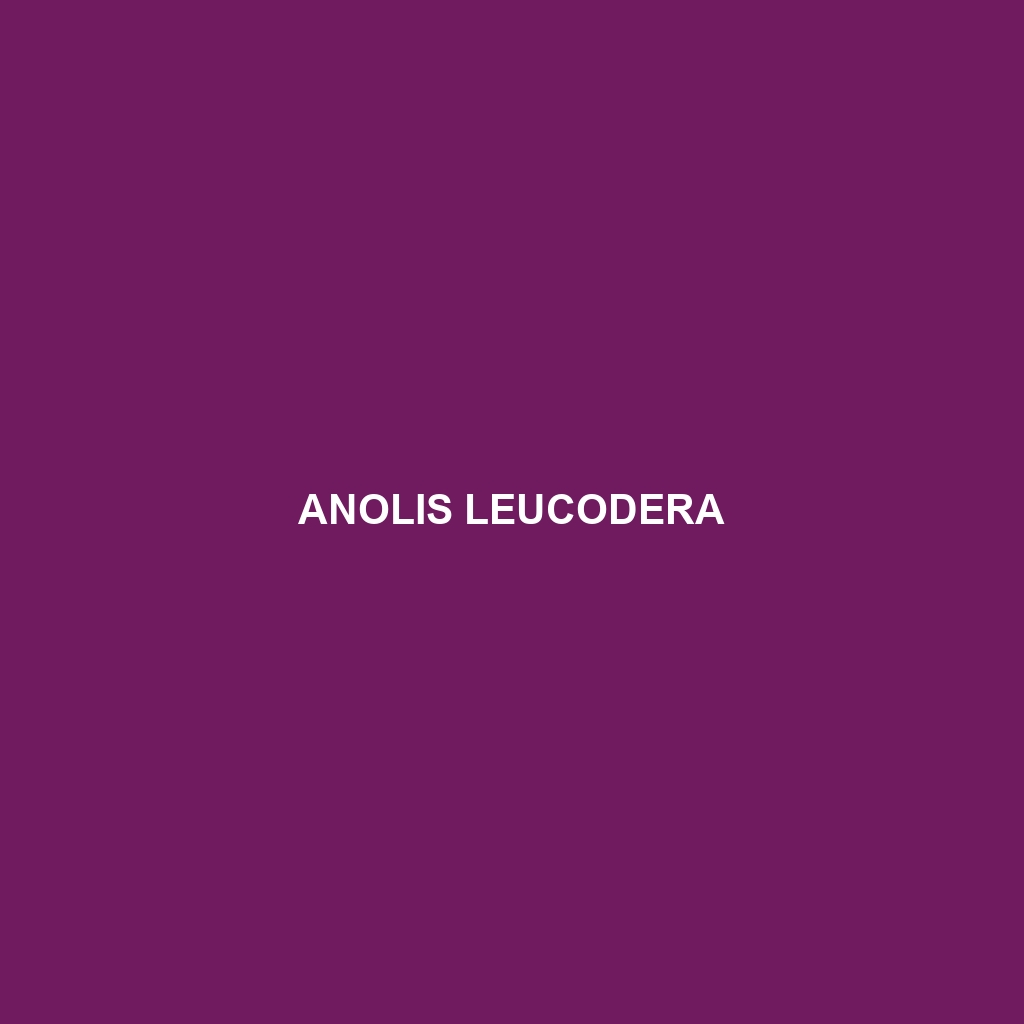Common Name: Anolis leucodera
Scientific Name: Anolis leucodera
Habitat:
Anolis leucodera, commonly known as the White-throated Anole, is primarily found in the lush, tropical regions of northeastern Mexico and parts of Central America. This species thrives in humid environments, often inhabiting lowland forests, shrublands, and even urban gardens where vegetation is dense. Its preference for leafy areas provides both camouflage and hunting grounds.
Physical Characteristics:
Anolis leucodera typically reaches a length of about 4 to 6 inches, with a slender body shape and long limbs. The most distinctive feature is its bright green coloration, which helps it blend seamlessly into the foliage. Males are particularly notable for their vibrant yellow-green throat pouch, which they display during mating rituals. Additionally, they possess large, adhesive toe pads that allow them to climb smoothly on various surfaces.
Behavior:
This species is diurnal, meaning it is active during the day. Anolis leucodera is known for its territorial behavior, particularly among males. They often engage in elaborate displays, including push-ups and head-bobbing, to assert dominance. They are also adept climbers, spending much of their time on tree trunks and branches, which aids in both hunting and evading predators.
Diet:
The diet of Anolis leucodera primarily consists of small insects and other invertebrates. Common food sources include ants, spiders, and small caterpillars. Their ability to catch prey mid-air demonstrates excellent hunting skills. This species plays a vital role in controlling insect populations within its habitat.
Reproduction:
Anolis leucodera typically breeds during the warmer months of the year. Males attract females through displays of their vibrant throat pouches. After mating, females lay fertilized eggs in moist, hidden locations, such as under leaves or within crevices. The incubation period for the eggs is generally around 6 to 8 weeks before the hatchlings emerge, ready to fend for themselves.
Conservation Status:
As of now, Anolis leucodera is classified as Least Concern by the IUCN Red List. However, habitat loss due to deforestation and urbanization poses a potential threat to its populations. Conservation efforts aimed at preserving its natural habitat are crucial for sustaining this species.
Interesting Facts:
One fascinating aspect of Anolis leucodera is its remarkable ability to change color in response to environmental factors, similar to that of chameleons. This adaptation not only aids in camouflage but also helps in thermoregulation. Furthermore, their unique mating displays and social interactions provide insight into the complex behaviors of anole species.
Role in Ecosystem:
Anolis leucodera plays a critical role in its ecosystem as both predator and prey. By feeding on insects, it helps maintain the balance of insect populations. In turn, it serves as a food source for larger predators, including birds and mammals. The presence of this species is indicative of a healthy, thriving ecosystem rich in biodiversity.
